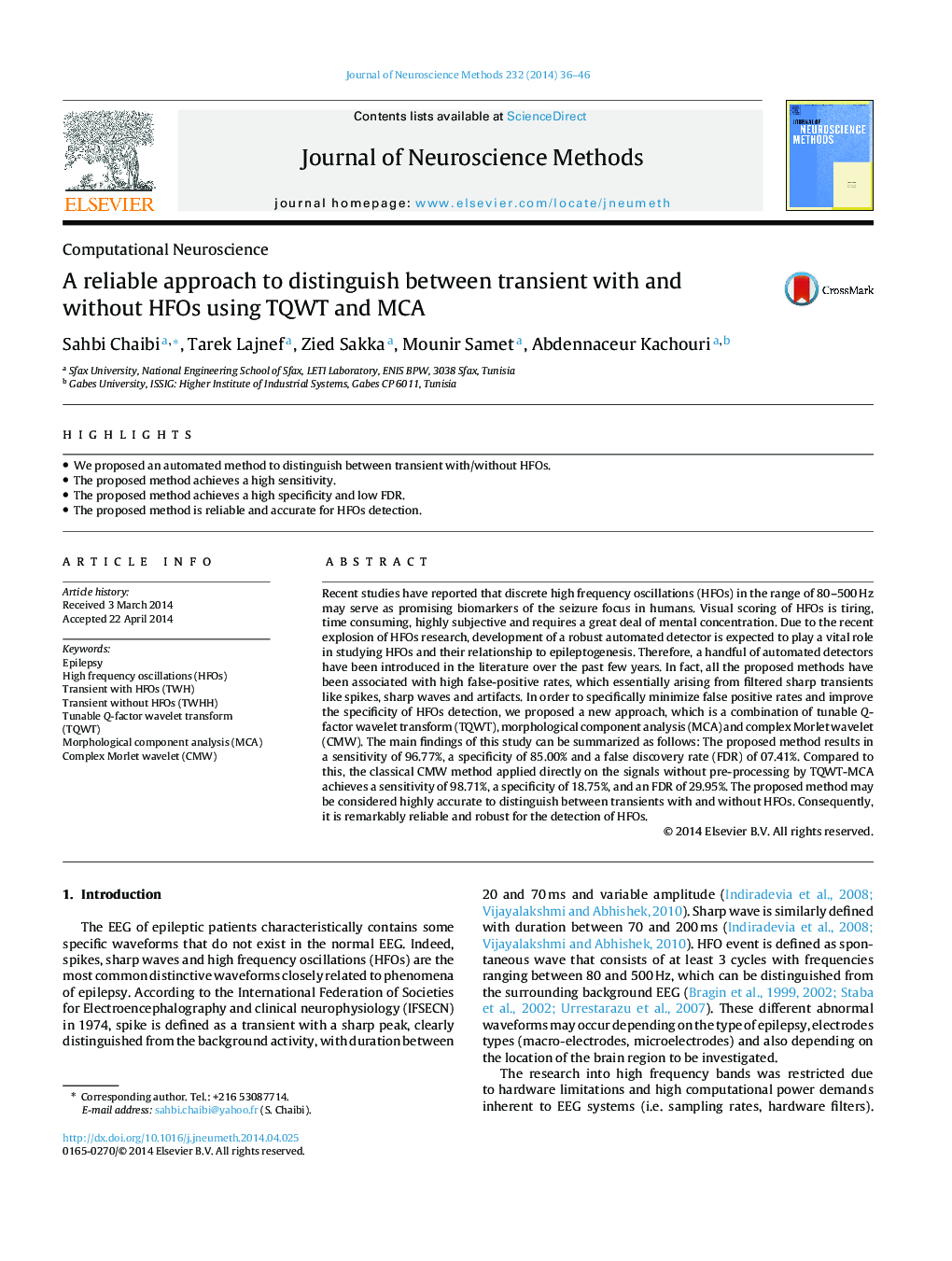| کد مقاله | کد نشریه | سال انتشار | مقاله انگلیسی | نسخه تمام متن |
|---|---|---|---|---|
| 6268670 | 1614637 | 2014 | 11 صفحه PDF | دانلود رایگان |
عنوان انگلیسی مقاله ISI
A reliable approach to distinguish between transient with and without HFOs using TQWT and MCA
دانلود مقاله + سفارش ترجمه
دانلود مقاله ISI انگلیسی
رایگان برای ایرانیان
موضوعات مرتبط
علوم زیستی و بیوفناوری
علم عصب شناسی
علوم اعصاب (عمومی)
پیش نمایش صفحه اول مقاله

چکیده انگلیسی
Recent studies have reported that discrete high frequency oscillations (HFOs) in the range of 80-500Â Hz may serve as promising biomarkers of the seizure focus in humans. Visual scoring of HFOs is tiring, time consuming, highly subjective and requires a great deal of mental concentration. Due to the recent explosion of HFOs research, development of a robust automated detector is expected to play a vital role in studying HFOs and their relationship to epileptogenesis. Therefore, a handful of automated detectors have been introduced in the literature over the past few years. In fact, all the proposed methods have been associated with high false-positive rates, which essentially arising from filtered sharp transients like spikes, sharp waves and artifacts. In order to specifically minimize false positive rates and improve the specificity of HFOs detection, we proposed a new approach, which is a combination of tunable Q-factor wavelet transform (TQWT), morphological component analysis (MCA) and complex Morlet wavelet (CMW). The main findings of this study can be summarized as follows: The proposed method results in a sensitivity of 96.77%, a specificity of 85.00% and a false discovery rate (FDR) of 07.41%. Compared to this, the classical CMW method applied directly on the signals without pre-processing by TQWT-MCA achieves a sensitivity of 98.71%, a specificity of 18.75%, and an FDR of 29.95%. The proposed method may be considered highly accurate to distinguish between transients with and without HFOs. Consequently, it is remarkably reliable and robust for the detection of HFOs.
ناشر
Database: Elsevier - ScienceDirect (ساینس دایرکت)
Journal: Journal of Neuroscience Methods - Volume 232, 30 July 2014, Pages 36-46
Journal: Journal of Neuroscience Methods - Volume 232, 30 July 2014, Pages 36-46
نویسندگان
Sahbi Chaibi, Tarek Lajnef, Zied Sakka, Mounir Samet, Abdennaceur Kachouri,